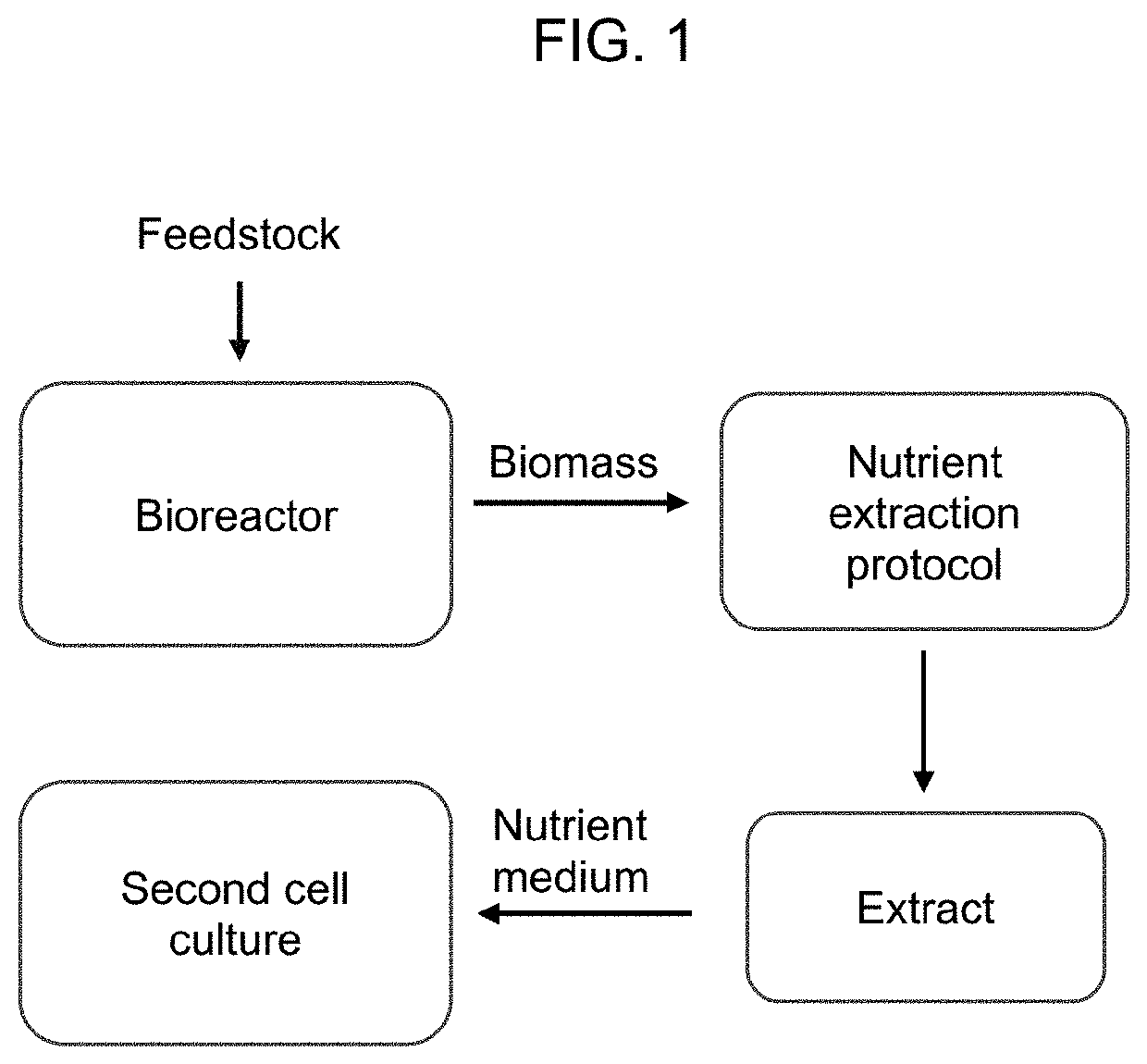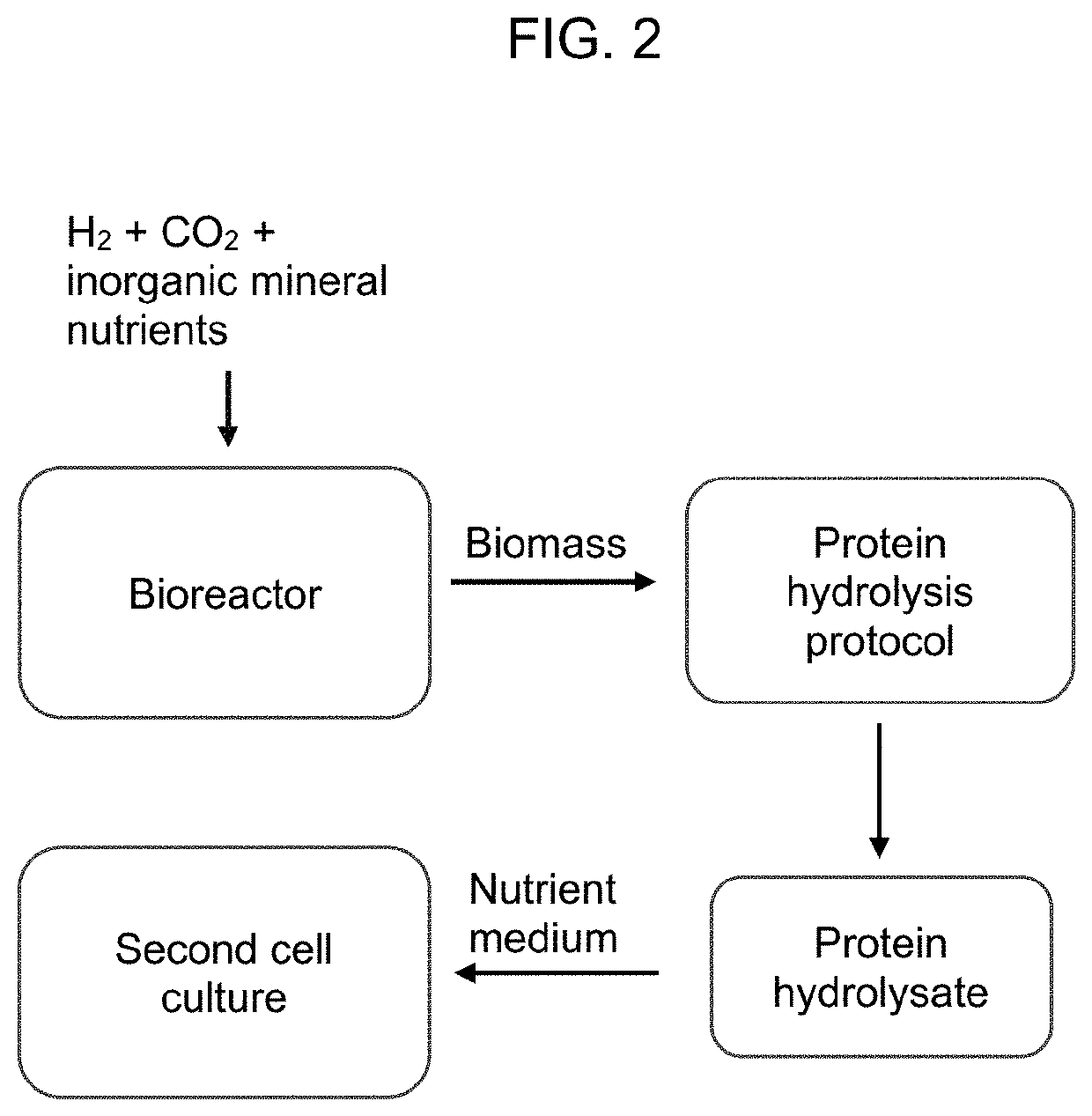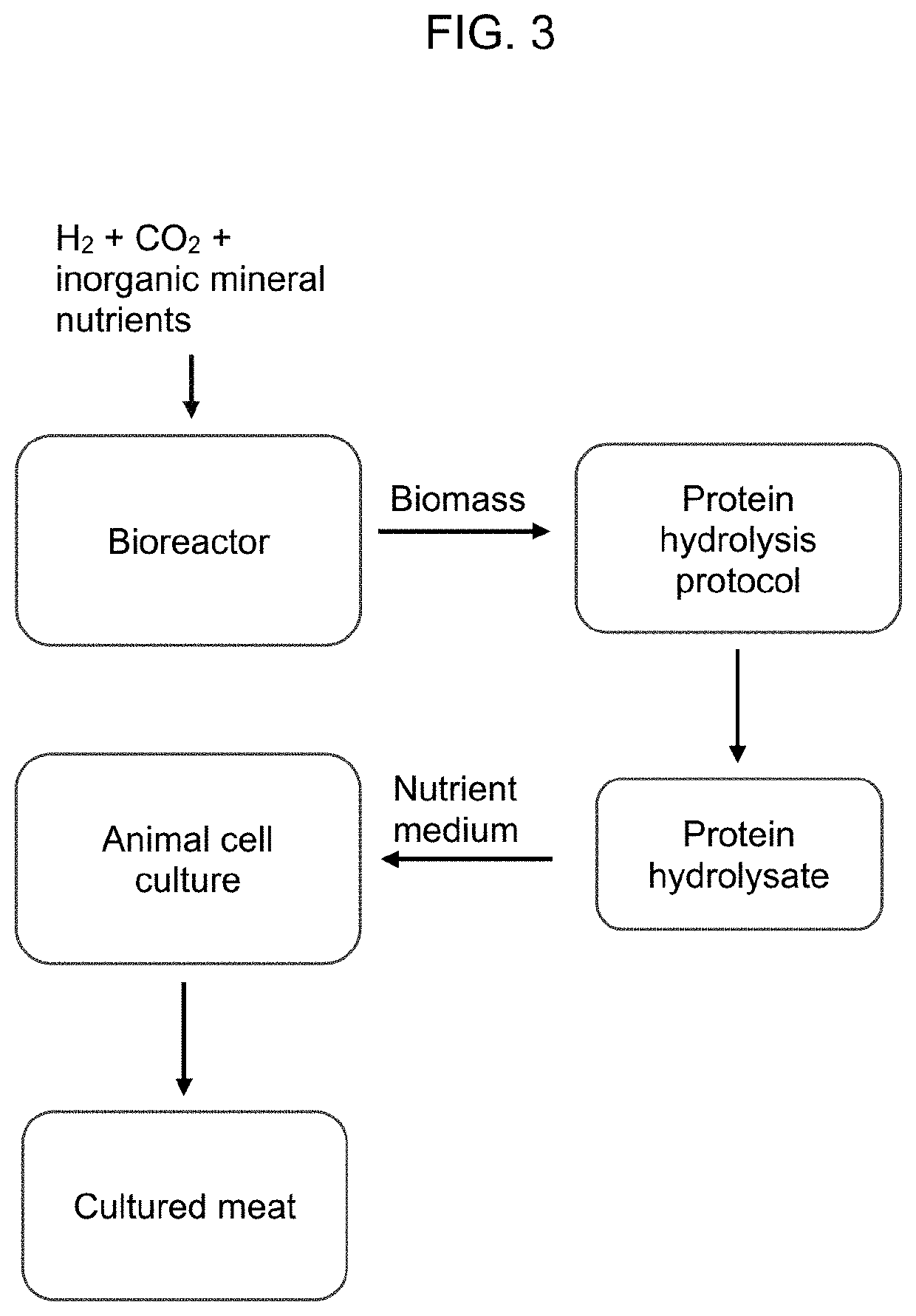Microorganism-Derived Protein Hydrolysates and Methods of Preparation and Use Thereof
a technology of protein hydrolysate and microorganisms, applied in the field of protein hydrolysates, can solve the problems of undefined serum and protein hydrolysate, animal-derived growth supplements have downsides, and the capacity of labs to synthesize amino acids, so as to improve the performance or characteristics of plants
- Summary
- Abstract
- Description
- Claims
- Application Information
AI Technical Summary
Benefits of technology
Problems solved by technology
Method used
Image
Examples
example 3
ydrolysate Design
[0335]For a variety of different digestion processes (acid versus alkali versus enzyme hydrolysis versus autolysis), choice of enzymes (purified or blends of exogenous animal / plant / microbial enzymes and / or endogenous enzymes) that have different enzyme specificities, and process parameters (pH, temperature and incubation / processing time), analysis of the resultant protein hydrolysate produced from chemoautotrophic biomass is performed. The release of peptides and size of peptides, represented as a peptide profile, is performed. The average molecular weight (MW) of the peptides (Da) is determined. The ratio of amino nitrogen to total nitrogen (AN / TN ratio) and degree of hydrolysis (DH %) is measured, as well as the levels of free amino acids. The effect of various hydrolyzing agents is compared on the basis of DH % and the peptide and amino acid distribution profiles. A comparison of protein hydrolysates produced as described herein is also performed against common a...
example 6
th of Lactic Acid Bacteria on Protein Hydrolysates and Protein Isolate
[0354]GRAS lactic acid bacteria (LAB) are tested on nutrients derived from Cupriavidus necator proteinaceous biomass produced from CO2. The protein-derived nutrients to be tested include: an alkaline protein hydrolysate (PH) produced by a base treatment with NH4OH followed by neutralization with CO2 and enzymatic hydrolysis using bacterial alkaline protease (BAP); an acid protein hydrolysate produced by an acid treatment with H3PO4 followed by neutralization with Ca(OH)2 and then enzymatic hydrolysis with BAP; and a protein isolate (PI) formed by sonication of the biomass followed by centrifugation, discard of the pellet, and recovery, and drying of the protein-rich supernatant.
[0355]These and other protein derived products are tested on LAB strains including but not limited to S. thermophilus, L. delbrueckii subsp. Bulgaricus, L. acidophilus, and Bifidobacterium lactis. LAB strains will be tested individually as ...
example 7
rotein Hydrolysate Effect on Cell Viability and other Performance Metrics
[0360]The effect of a lysate and / or protein hydrolysate, prepared as described herein, from CO2 as the sole source of carbon entering into the production process, on a cell culture that is provided the lysate and / or protein hydrolysate is performed. The effect on the viability of a LA strain of 2% (w / v) addition of an acid hydrolysate of proteins, produced as described herein, to a milk substrate, is determined. The viability of the LA strain after 12 weeks in terms of colony forming units (CFU) / gram is determined for both the experiments and the controls. The negative control can be the milk substrate alone. The positive controls can include 2% addition of acid casein hydrolysate (ACH) and cysteine. Other controls, positive and negative, can include additions of cysteine alone, ACH alone, whey powder (WP), whey protein concentrate (WPC), tryptone (tryptic digest of casein), soy protein hydrolysates including b...
PUM
| Property | Measurement | Unit |
|---|---|---|
| Fraction | aaaaa | aaaaa |
| Fraction | aaaaa | aaaaa |
| Fraction | aaaaa | aaaaa |
Abstract
Description
Claims
Application Information
 Login to View More
Login to View More - R&D
- Intellectual Property
- Life Sciences
- Materials
- Tech Scout
- Unparalleled Data Quality
- Higher Quality Content
- 60% Fewer Hallucinations
Browse by: Latest US Patents, China's latest patents, Technical Efficacy Thesaurus, Application Domain, Technology Topic, Popular Technical Reports.
© 2025 PatSnap. All rights reserved.Legal|Privacy policy|Modern Slavery Act Transparency Statement|Sitemap|About US| Contact US: help@patsnap.com



